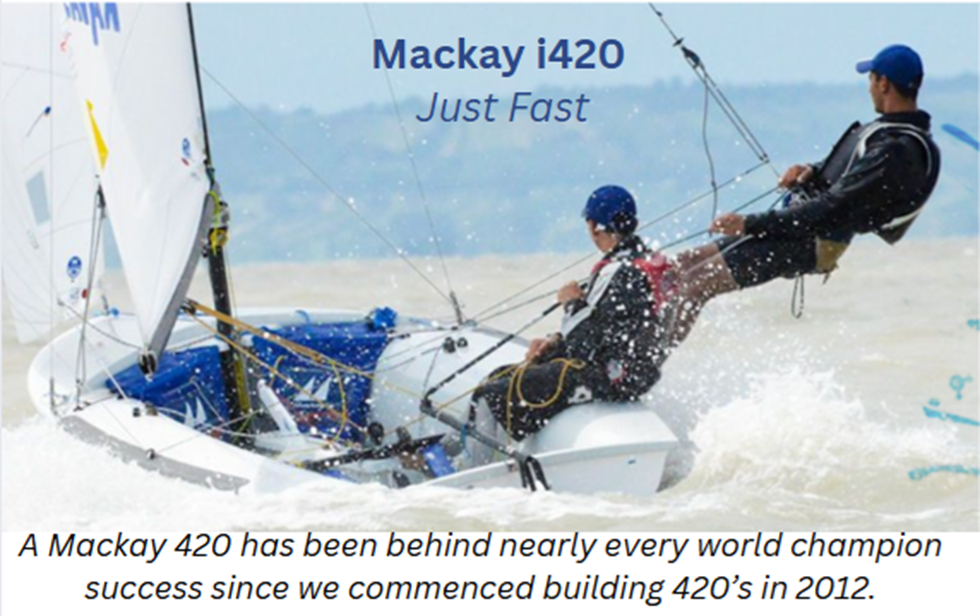By Airwaves Writer Chris Klevan
Editors Note: We invite your comments and thoughts. Please see below or click the “Leave a Comment” button.
One afternoon in early June, 2013, the Head Coach of the Boston College Varsity Sailing Team, Greg Wilkinson, sent an email to Zack Leonard, Head Coach of the Yale sailing team. The email contained an attachment, an open letter titled, “Dear Youth Sailing Parents.” The first line of the letter reads, “We’re writing to apologize for misleading you.”
Mr. Wilkinson hoped that all the college sailing coaches would sign the letter, aspiring that the leaders from college sailing, collectively, could save the readers from themselves. Unfortunately, this letter was never sent.
The letter echoes the sentiments felt by many coaches across college sailing. It was written to try to flip the misconception about youth sailing’s impact on any given sailor’s future in college. True, junior sailing can help one hone some of the skills needed to get ahead of the steep learning curve that is college sailing. There’s no doubt that most of the best in the game today have had success in sailing prior to arriving to college. However, skipping your SAT prep class to crisscross the country building the “perfect” sailing resume is a terrible misstep. Moreover, to suggest that there is any one class of boats that is more relevant due to the attention coaches pay to it is totally off base.
“We are NOT looking for class champions from any one particular class,” stated Wilkinson. “You would be ill advised to counsel your sons and daughters to sail a particular boat because ‘that’s the boat that the college coaches pay attention to’. That single boat does not exist.”
Wilkinson continued in 2013, “I estimate that 15-25 kids per year get accepted into colleges where, without support from the coach, they would have been rejected.” In other words, only 15 to 25 of the thousand-plus applicants have a sailing resume that is strong enough to get them into a better school than their grades would otherwise justify. That’s only about 2%. For everyone else, the academic profile of the sailor will always match the academic profile of the school to which they are applying.
Very few college sailing teams cut players. If you have a background in racing and an eagerness to learn, there is a spot on a team somewhere. But you still have to get in, and your grades are your most important asset. You should be visiting schools early in your Junior year of high school, for it is your job, as the applicant, to find the right school and the right team for you.
“Kids should keep their focus on academics while enjoying their sailing,” said Zack Leonard of Yale University.
“There’s a range all schools are looking for,” said a head sailing coach who wished to speak only off the record. “If you fit into that range you have a chance to get in.” Sailing can create a positive relationship with a coach, who probably has some relationship with an admissions department. If the coach feels that you may fit into the team culture he or she is trying to maintain, that coach may be able to shine a light—but only if you already fit into the academic range. If a coach does not seem interested in you, that likely indicates the coach does not feel you are experienced enough as a sailor to add value to their team or you do not have a strong enough academic profile to be accepted. Do not be discouraged, there is a home for you if you want to sail in college.
John Vandemoer, head coach of Stanford University, said, “We rarely support a player that only does high school sailing, we really look for players that love the sport, love being on the water and are eager to learn multiple disciplines.”
John Pearce, former Head Coach at the George Washington University and currently Youth Director at US Sailing, adds “Several of the best recruits we had at GW were kids who were trapeze crews in the C420 and the 29er and also did high school and laser sailing on the side. It was immediately apparent that trapeze crewing had developed their feel for the boat and awareness of balance and apparent wind in a way that “sit down” sailing doesn’t. It was easy to get them up to speed in the collegiate dinghies, and they just kept getting better and better. Some of the kids who only sail one boat as youth sailors are missing out on the opportunity to expand their abilities and develop a more well-rounded skill set.”
The college game, however, is very different than that of junior sailing. What you must understand, as a trapeze crew, is that you will be skippering in practices and advancing through the various levels of regattas in college sailing as a skipper. This will broaden your ability as a career sailor and improve your tactical awareness. The collegiate FJ is extremely underpowered compared to junior sailing boats featuring trapezes. It is only at the championship level regattas that the professional heavy air crew is of value to college coaches.
There are very few schools that support the majority of their sailors in the admissions process. There are no schools that can get you a break on your tuition due to sailing. The ICSA rules explicitly prohibit scholarships based on sailing ability. Again, it is the grades get you in and help you with tuition. It is not the coaches or the sailing that will get you into the school of your dreams.
What you, the sailor, should seek in your interactions with different coaches across college sailing isn’t help getting into school, but rather a better understanding of the subtle differences between schools and sailing teams. Once you find the school that seems right for you, the next step is to work hard to improve all your scores. Your best move is to study. Try to make yourself as desirable as possible, not in the eyes of Greg Wilkinson or John Vandemoer, but in the eyes of whichever admissions officer might read your application. Then, once you get in, go to the best school possible in terms of academics, find a school with programs that fit your interests, and join the sailing team with an open mind.
College sailing offers a unique sailing experience where teamwork is extremely important. It offers an opportunity for average sailors to become good sailors, and in the meantime they can help their friends become great. It is an umbrella that collects a ton of sailors from different backgrounds and puts them all on an even playing field. The equipment is extremely simple and basic. The courses are small and often light and shifty. It helps show an individual that, with hard work and some skill, you have a shot to be the best. It helps show a group of people that, together, they can decide on a goal, work hard, support each other and, win or lose, the experiences and the bonds built are invaluable. But it is just a small, fun, well-connected niche in the sailing world. It does not lead to a career in sailing. The vast majority of college sailors use their experiences and the degree they earned to get a job outside of sailing and perhaps they have their team picture hanging above their desk, next to their diploma.
Sailing in college is an excellent way to spend your four years. However, it is not what you are applying for. It, in itself, will not get you into college and, therefore, neither will your time spent on the youth sailing circuit or your visit with the varsity sailing coach. The letter Mr. Wilkinson wrote and never sent was supposed to cut at that misunderstanding. Every college sailing coach wants highly skilled sailors who can be good leaders and are always great people. We want people to add to our teams in as many aspects as possible. However, we do not want to waste your time.
Sailing before college can help shape your college application. Sailing is a great extracurricular activity, like chess or the debate team. It can help show that the applicant is passionate about her or his interests. That, coupled with good scores, can help separate the sailor from all the other qualified applicants in a stack of paper sitting in an admissions department. For 98% of kids applying to schools with an attached sailing resume, that is the extent of youth sailing’s function on a college application.
For a quick look at the student’s point of view, see our article, “College Sailing From the Recruits Point of View”
Photo take from ICSA on Facebook



It’s not too late to send this important and very relevant letter!
Absolutely choose a college on academic merits, but it’s time for College Sailing to join the NCAA and offer women’s athletic scholarships.
Interesting read. Our son attends UC Irvine and is on the sailing team. He choose UCI because they do have an interest in sailing. His major is extremely impacted which kept him out of other school considerations. Aero engineering. That’s another topic about who the schools are admitting. Sailing is a club sport there. No coaches unfortunately. But with all the talk about how do we get young people interested in sailing the club aspect is working. Their team has a number of new students that had never sailed before. So its a trade off. The schools with coaching tend to do better. Sailing does offer the opportunity to line up with the better schools with coaches and No coaches.